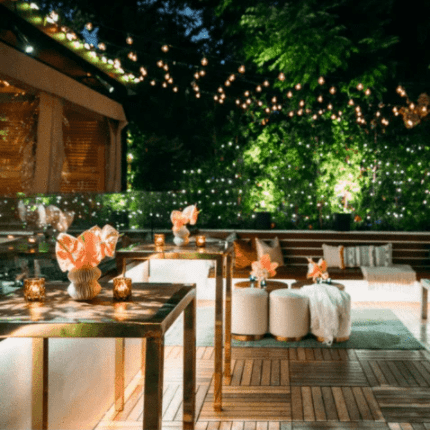Your Cart is Empty
K
Christmas Table Bauble Placecards Gold Sequins Set of 12 These table place holders are the perfect size and sparkle to light up any event. I am using this for Christmas in July and also plan on using the for our Melbourne Cup and Mother's Day functions.
Great price as well.
highly recommend purchasing them
Elizabeth at My Event Decor was professional and prompt in assisting us theme our event. If you can think it she can provide!! Would you believe we had fish bowls and live fish on our tables! It brought our water themed conference alive! Thank you for making it happen!
K
Christmas Tree 180cm Rustic LED Twig Scandi Ex-Rental This is an absolutely beautiful Christmas tree. It replaced a smaller one I had of the same style, LED lights on twig-style branches. But this one is so much nicer than the previous one I owned. The tree when lit is stunning, but even without the LED lights on, it is still a gorgeous decoration all on its own. So glad I purchased this and I was very happy with the contact with the store and the promptness of posting this to me.
Thank you. I love my easel, perfect. And the delivery guy, courteous, respectful and a special guy. Pleasure doing business with you both . Julia

 How do you work out the number of pendants you need to effectively light a certain area?
How do you work out the number of pendants you need to effectively light a certain area? We're having our
We're having our  We want a permanently lit-up bar in our corporate boardroom. What would you suggest?
We want a permanently lit-up bar in our corporate boardroom. What would you suggest? We're renovating our upscale French bistro. What are the types of lighting we can use that at our venue for visual impact?
We're renovating our upscale French bistro. What are the types of lighting we can use that at our venue for visual impact? Our event is a makeup product launch. Our number one priority is soft, flattering lighting yet bright enough for the photographers to take shots. What should we look for?
Our event is a makeup product launch. Our number one priority is soft, flattering lighting yet bright enough for the photographers to take shots. What should we look for? We've seen events featuring projection mapping on Instagram. What do we need to do this effectively?
We've seen events featuring projection mapping on Instagram. What do we need to do this effectively? For Earth Hour Day we want to light our venue exclusively with candles - real and/or faux. How can we work out how many candles we'd need to create enough light?
For Earth Hour Day we want to light our venue exclusively with candles - real and/or faux. How can we work out how many candles we'd need to create enough light? Calculate the number of LED candles you'll need
Calculate the number of LED candles you'll need